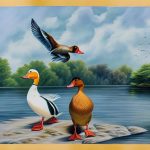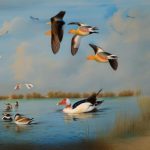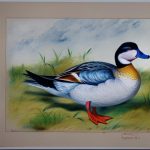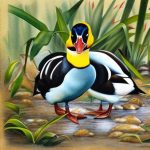American wild duck breeds are a diverse group of waterfowl that are native to North America. These ducks are known for their stunning plumage, unique behaviors, and important role in the ecosystem. There are several different species of wild ducks in America, each with its own distinct characteristics and traits. From the iconic Mallard to the lesser-known Wood Duck, these birds are a beloved part of the natural landscape and have captured the imagination of birdwatchers and conservationists alike.
Key Takeaways
- American wild duck breeds are an important part of the country’s natural ecosystem and have a rich history and origin.
- These wild duck breeds have unique physical characteristics and traits that make them distinct from other duck breeds.
- Some popular American wild duck breeds include the Mallard, Wood Duck, and American Black Duck.
- Conservation and protection efforts are crucial for preserving the population of American wild duck breeds.
- Breeding and rearing American wild duck breeds require careful attention to their natural habitat and dietary needs.
History and Origin of American Wild Duck Breeds
The history of American wild duck breeds dates back thousands of years, with evidence of their existence found in ancient cave paintings and artifacts. These birds have long been an important part of Native American culture, with many tribes incorporating them into their mythology and daily life. European settlers also recognized the value of wild ducks, both as a source of food and as a symbol of the untamed wilderness. Over time, these birds have become an integral part of the American landscape, with their presence felt in wetlands, rivers, and lakes across the country.
Characteristics and Physical Traits of American Wild Duck Breeds
American wild duck breeds are known for their striking physical characteristics, including vibrant plumage, unique bill shapes, and distinctive calls. The Mallard, for example, is easily recognizable by its iridescent green head and bright orange bill, while the Wood Duck is known for its stunning multicolored feathers and distinctive squealing call. These birds also exhibit a wide range of behaviors, from the acrobatic courtship displays of the Northern Pintail to the secretive nesting habits of the Blue-winged Teal. In addition to their visual and auditory traits, wild ducks also play an important role in the ecosystem, serving as both predators and prey in the food chain.
Popular American Wild Duck Breeds
Some of the most popular American wild duck breeds include the Mallard, Wood Duck, Northern Pintail, Blue-winged Teal, and American Black Duck. Each of these species has its own unique characteristics and behaviors that make them a favorite among birdwatchers and conservationists. The Mallard, for example, is one of the most widespread and adaptable duck species in North America, while the Wood Duck is known for its stunning plumage and elusive nature. The Northern Pintail is admired for its elegant appearance and graceful flight, while the Blue-winged Teal is prized for its striking blue wing patches. The American Black Duck, on the other hand, is known for its shy and secretive nature, making it a challenging bird to spot in the wild.
Conservation and Protection Efforts for American Wild Duck Breeds
Conservation and protection efforts for American wild duck breeds are crucial to ensuring the long-term survival of these iconic birds. Habitat loss, pollution, and hunting have all taken a toll on wild duck populations, making it essential to take proactive measures to protect them. Organizations such as Ducks Unlimited and the National Audubon Society work tirelessly to conserve wetlands and other critical habitats for wild ducks, while also advocating for responsible hunting practices and sustainable management of waterfowl populations. In addition to these efforts, education and outreach programs help raise awareness about the importance of wild ducks in the ecosystem and inspire people to take action to protect them.
Breeding and Rearing American Wild Duck Breeds
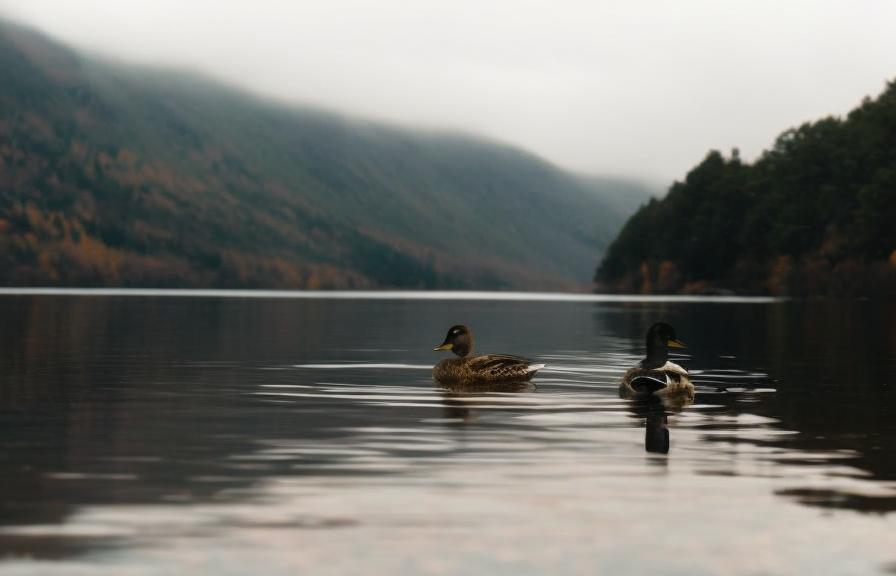
Breeding and rearing American wild duck breeds is a complex and challenging process that requires careful attention to detail and a deep understanding of the birds’ natural behaviors. Many conservation organizations and wildlife refuges have established captive breeding programs to help bolster wild duck populations and ensure genetic diversity. These programs often involve carefully managed breeding pairs, specialized enclosures, and meticulous record-keeping to track the health and genetic diversity of captive populations. Once hatched, young ducks are raised in controlled environments until they are old enough to be released into the wild, where they can contribute to the overall health and vitality of wild duck populations.
Importance of American Wild Duck Breeds in Ecosystems
American wild duck breeds play a crucial role in ecosystems across North America, serving as both predators and prey in the food chain. As omnivorous waterfowl, they help control insect populations, disperse seeds, and contribute to nutrient cycling in wetland habitats. Their presence also supports a wide range of other species, from fish and amphibians to plants and invertebrates. In addition to their ecological importance, wild ducks also hold cultural significance for many people, serving as a source of inspiration for artists, writers, and conservationists. By protecting and conserving these iconic birds, we can help ensure the health and vitality of our natural world for generations to come.
If you’re interested in learning more about American wild duck breeds, you might also want to check out this informative article on creating the perfect interior for your chicken coop. The article provides valuable insights and ideas for maximizing the comfort and functionality of your coop, which can be beneficial for both ducks and chickens. You can read the full article here.
FAQs
What are American wild duck breeds?
American wild duck breeds are species of ducks that are native to North America and are found in various habitats such as marshes, ponds, lakes, and rivers. These breeds are known for their colorful plumage and unique characteristics.
What are some examples of American wild duck breeds?
Some examples of American wild duck breeds include the Mallard, Wood Duck, American Black Duck, Northern Pintail, Gadwall, and Blue-winged Teal. Each breed has its own distinct features and behaviors.
What do American wild duck breeds eat?
American wild duck breeds are omnivorous and feed on a variety of foods including aquatic plants, insects, small fish, and crustaceans. They may also forage for seeds, grains, and grasses on land.
Where can American wild duck breeds be found?
American wild duck breeds can be found throughout North America, with some species migrating to other regions during certain times of the year. They inhabit a wide range of habitats including wetlands, marshes, rivers, lakes, and coastal areas.
Are American wild duck breeds protected?
Many American wild duck breeds are protected under various conservation laws and regulations to ensure their survival and well-being. Hunting seasons and bag limits are often established to manage their populations sustainably.
Meet Walter, the feathered-friend fanatic of Florida! Nestled in the sunshine state, Walter struts through life with his feathered companions, clucking his way to happiness. With a coop that’s fancier than a five-star hotel, he’s the Don Juan of the chicken world. When he’s not teaching his hens to do the cha-cha, you’ll find him in a heated debate with his prized rooster, Sir Clucks-a-Lot. Walter’s poultry passion is no yolk; he’s the sunny-side-up guy you never knew you needed in your flock of friends!


